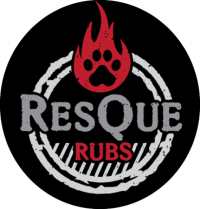The Furkids mission is to provide a safe haven and quality care for homeless pets until we can match them with new owners in a loving, lifelong home. We also work to educate the community about proper pet care and the importance of spaying and neutering.
Please understand that while we have accomplished a great deal and each day we strive to help more of Georgia’s homeless animals, it is impossible for us to take every animal into our program. However, it is our goal to provide information that may help you.
Please follow these links for specific information about your need:
- Animal Welfare
- Behavioral Issue with Pet
- Declawing Dangers
- Domestic Violence and Animals
- Feral Cats
- Financial Assistance
- Finding Lost Pet
- Food Bank for Pets
- Injured or Sick Animal
- Introducing a New Pet Into Your Home
- Just for Fun
- Low Cost Spay/Neuter Options
- Pet Friendly Apartments (Atlanta)
- Rescue for an Animal
- Surrendering a Pet
Animal Welfare
- The Animal Welfare and Enforcement Center for Gwinnett County is located in Lawrenceville. If you have an animal emergency, have found a stray animal, or need to file a complaint for Gwinnett County we suggest you contact them first. They take animal cruelty and neglect very seriously. You can call them at 770.339.3200, e-mail their Animal Cruelty officer directly, or visit their website to learn more.
- Not providing proper food, water, and shelter at all times constitutes neglect. Animal cruelty applies to acts of violence. In Gwinnett it is illegal to have a dog chained/tethered for more than one hour at a time, and it is illegal to leave an animal unattended in a vehicle. For details, click here.
- Dog fighting in Georgia is a very common and hidden issue. There is a national tip line if you suspect dog fighting is taking place. Call 1-877-TIP-HSUS.
Behavioral Issue with Pet
If you are experiencing a behavioral issue with your pet, we recommend contacting a behavioralist to help. We are providing the number of a valuable resource, Ingrid Johnson. Her fees are very affordable and her recommendations work! We encourage you to do everything in your power to keep your pet in your home, as there simply are not enough homes in Georgia for all of the unwanted and abandoned pets.
FOR CATS: Ingrid Johnson www.fundamentallyfeline.com [email protected]
Declawing Dangers
If you are considering declawing your cat, please learn more about the the procedure before you make your decision.
Declawing your cat is NOT like giving it a manicure – it is a serious, painful, and unnecessary surgery. There are many health risks associated with the procedure, as well as the potential of lasting behavioral effects. The good news is that with a little preparation, unnecessary scratching is easily preventable!
Soft Paws and Sticky Paws are an effective, safe, and humane alternative to declawing. Remember, though, always provide your kitty with adequate scratching posts and cut their nails regularly!
Domestic Violence & Animals
Perpetrators of domestic violence often hurt family pets to control and intimidate their victims. Ahimsa House, Inc. – a 501(c)(3) nonprofit organization – is dedicated to helping the human and animal victims of domestic violence across Georgia reach safety together. “Ahimsa” is a Sanskrit word meaning non-violence.
Feral Cats
Feral cats by definition are: afraid of humans, do not belong indoors, and are wild in every sense of the word. If caught at a young age the offspring from wild cats can be domesticated and adopted. Feral cat caregivers routinely trap wild cats, transport them to spay and neuter centers, and then release them back into the wild. This is called Trap-Neuter-Return (TNR). If you want to learn more about how to trap and manage a feral cat colony or feral cats in general, visit some of the links below:
- Truth About Feral Cats
- Humane Trapping Instructions
- Free Spay/Neuter for Feral Cats in DeKalb and Fulton
- Alley Cat Allies promotes non-lethal control for feral and stray cats with trap-neuter-return (TNR) programs that effectively reduce their population by sterilization, not euthanasia.
- Visit YouTube and search “feral cat trap” to find videos and tutorials on how to trap a feral cat.
Also:
- Visit our section about low-cost spay/neuter programs in the Atlanta area. Most of the websites listed will also include information on low-cost vaccinations. A cat that is current on their shots and has been spayed/neutered will be easier to place in home.
- BestFriends.org offers excellent information on How to Find Homes for Homeless Pets (marketing, screening applicants, etc).
- LifeLineAnimal.org offers information on Catlanta — a resource for information on trapping, neutering, and releasing feral cats. The Feral Program Coordinator is Gin Taylor; she is happy to answer any questions about traps or trapping. She can be reached at [email protected] or 404-292-8800 ext 24 or 21. You can also borrow traps from Catlanta.
Financial Assistance
- Well Pet Humane low cost services. Located at 6225 Peachtree Industrial Boulevard Doraville, Georgia 30360
- SPOT – Stopping Pet Overpopulation Together: Funding and providing low to no cost spay/neuters for pets of disadvantaged residents of the Atlanta metro area.
- Homeless Pets Foundation – Pet adoptions & will pay for life-saving veterinary bills for pet caregivers in financial need.
- Spay Georgia: For people who need financial assistance in order to have their own pets spayed or neutered.
Finding Lost Pet
If your pet is missing start checking with various animal control centers in your area. If your pet is brought to an animal control center as a stray/found animal, they only have to hold your pet 3-5 days before they put your pet up for adoption and after the 3-5 days your pet can be put to sleep. It is very important you go to the animal control centers in person; do not just call or fax over a picture! Visit multiple county animal control centers, as a good citizen may have taken your pet to a different county if they feel they have a better chance at adoption.
Contact other rescue groups. Spotsociety.org offers an excellent search tool for Georgia shelters and licensed rescue groups.
Post flyers in the area where your pet went missing. Missing Pet Partnership offers excellent tips on creating lost pet flyers/signs.
Also:
- The AJC can run a 30-day online ad for a lost pet for $15. Place free ads on Craigslist.
- PetSmart and PETCO have bulletin boards where a description of your animal can be posted.
- Check storm drains and check the woods around your home.
- Also try putting something that belongs to your pet on your porch, so (s)he can smell his/her home.
- If your pet is a cat, scatter some of his/her used litter throughout your yard so your pet can smell his/her scent.
- Carl Washington is a pet detective you can try. He is located near Augusta but travels to Atlanta as well as other parts of the country.
Food Banks for Pets
In these difficult times we know it can be a struggle to feed yourself and your pets. Pet food banks have become much more common. Local food banks for pet food and supplies include:
- Daffy’s Pet Soup Kitchen | Lawrenceville, GA
- Pet Buddies Food Pantry | Woodstock, GA
Injured or Sick Animal
Cobb Emergency Vet, 630 Cobb Pkwy N, Marietta, 770-424-9157, will take in injured strays, treat them and then turn them over to Cobb County Animal Control at no cost to you.
Introducing a new pet to your home
Below is some information we hope you will find both useful and educational. Please let us know if you have any questions.
Introducing A New Cat To Your Household
In spite of their reputation for being solitary animals, cats are actually very social creatures and enjoy the company of other cats and even dogs. Many times, behavior problems exhibited in a single-cat household can be resolved by bringing home a friend for the existing cat. When you feel it is time to add another cat to your household, or if a stray decides to adopt you, here are some tips that may make the introductions go more smoothly.
Bringing kitty home
Whether or not there are existing pets in the household, when you bring home a new cat or cats you should not give them the run of the house right away. Instead, set up a comfortable, quiet room with food, water, litterbox, and a bed or blanket. This “safe room” provides several advantages. It’s a place where your new kitty can get used to you and other members of the household without feeling overwhelmed by the entire house or apartment. The other pets in the household are also not in the room to further intimidate your new kitty while he’s exploring this strange new place. Also, as you begin to let him out of the room and into the rest of the house, he will have a familiar place to return to if he starts feeling insecure or out of his comfort zone.
Make sure the room, as well as the rest of the house, is “cat-proof”. Even if you already have cats that don’t chew on things like electrical cords, your new cat may find them fascinating and can get seriously injured or worse while playing. Also check for strings, ribbons, and small objects that cats can swallow, possibly leading to emergency surgery or even death. When you bring your kitty home, put him in the introductory room with the door closed, then open his carrier and let him come out on his own. Initially he may be shy or frightened and may find a place where he can gather himself and feel safe before checking things out. Cats feel safe either under things (bed, couch) or up high (cat condos, dressers, cabinets). Eventually he will begin exploring his new digs. Over the next few days make sure he’s eating well and using the litterbox. Any kind of change can be stressful to a cat, and moving to a new home is probably one of the most stressful events your cat will encounter. Because of this, it is not uncommon for cats to break with a cold or other illness after moving to a new home. Call your veterinarian immediately if you notice any signs of illness.
Introducing cats to cats
The key to introducing your cats is to TAKE IT SLOWLY. Do little steps at a time and evaluate how your cats react. There is no magic formula that will tell you when your cats are ready to be fully integrated in the household; you must be able to observe them and judge their progress on an individual basis. We’ve heard stories from clients whose cats got along beautifully from Day One, and others who took six months or more to finally live peacefully under the same roof. Above all, know that cats will get along together most of the time, even if they’re not the best of friends. Our adoption rooms here at the clinic, as well as the many clients and employees with multiple-cat households, are perfect examples of that. All cats have different personalities, so be careful not to have unrealistic expectations about their behavior until you get to know them.
During the introductory stage, you will probably notice that the original cats in your household will be very curious about The Other Cat Behind The Door. They will probably start sniffing under the door and maybe even start hissing. Don’t be alarmed; it’s normal for cats to hiss at something new or something they don’t understand. Make sure the new cat and the old cat associate good things with that door and what’s behind it. To do so, feed them canned food or treats on either side of the door; use catnip, play with their favorite toys, groom them, pet them, and talk to them, all things to make them feel happy and comfortable in the vicinity of the other cat.
To get both the new and the old cats used to each other’s scent, you can rub a towel or sweatshirt on the original cat and put it in the room with the new cat and vice versa. You can also groom one of the cats with a cat brush and then groom the other, thereby swapping scents. After a few days, you can let the new cat out to explore the house for short periods of time while putting the old cat in the safe room to explore the new cat’s scent. Eventually, they will probably start playing footsy under the door; now you’re ready to let them see each other face to face! Again, take it slowly. Some people have had success by opening the door and putting up a baby-gate in the doorway. This does not prevent the cats from jumping over the gate, but does give a buffer area so they are not completely exposed. They can now see each other, so expect some more hissing and growling. This is normal, and they will eventually get used to the sight of each other. We have heard from clients who installed a full screen door in the doorway, so the cats did not have access to each other but could still see, hear, and smell each other. This can be effective during the transition period, but it can also be a lot of work! A baby-gate is less labor-intensive, but you must provide closer supervision.
You can now begin letting the new kitty out for supervised visits with the rest of the household. You can probably expect some more hissing and growling from either the new cat, the old cat, or both, but it’s usually just a warning to the other cat and will probably not result in an all-out fight. The most important thing you can do is to be there for reassurance for all your kitties. Talk to them in a soothing voice, pet them, and see how it goes. Use interactive toys for ice-breakers. Examples are the Feline Flyer (feather on the end of a string attached to a plastic rod) and the laser pointer. These toys allow all cats to play at the same time, resulting in more positive associations with each other. Treats and canned food are also helpful; put their bowls slightly closer together at each mealtime to help your cats accept each other. And catnip is the great equalizer! They will romp and play and eventually fall asleep after a catnip break. Use your best judgment and gradually increase the amount of time spent together. They will get used to each other at their own pace, and their different personalities will dictate how they interact with each other and how they’ll eventually sort out their relationship. Also, as they begin to warm up and start playing with each other, keep in mind that normal cat play can look rough. We’ve talked with clients who have been working on what they perceived as aggression problems; the cats will roll around on the floor growling and biting until finally one jumps up and runs away, only to return and resume the “fight”. In talking further, the owner will reveal that the cats eat together, sleep together, and groom each other. What the owner perceives as aggressive behavior has turned out to be cats that are actually close friends, playing a game of rough and tumble!
Reminders for multiple-cat households
When you adopt a new furry friend, a cat is not all that you will be adding to the household. You’ll need more litterboxes; the rule of thumb is two boxes per cat plus an additional box (ask us for our Litterbox Fact Sheet with more litterbox tips). You also need more feeding stations and water bowls. Always leave dry food out and never let the bowls get empty, as this can create unnecessary food competition among cats. Finally, your cats will need more scratching posts, beds and cat condos. Even in small apartments you can make enough room for your cats by creating vertical space with cat condos.
Introducing cats and dogs
When introducing dogs and cats, always keep in mind that a dog can seriously harm a cat, even in play. In the case of an actual fight, cats often do not survive. Dogs and cats can and do get along very well, but there are many rules that you need to institute when integrating them. Most importantly, dogs must understand that they are always beneath the cats in the social status of the household. In human terms that may not seem “fair”, but dogs are pack animals and will always respect the hierarchy that exists in the pack. You must make it clear to the dogs that the cats are above them in that hierarchy, and they will respect the cats. And even though your dog is subordinate to your cats, he will also be very protective of the cats and the rest of the household; dogs protect the entire pack.
When your cat and dog first meet, no matter which animal is the new member of the household, always have the dog on a short leash and keep hold of it the entire time. Better yet, put your dog in his crate and let the cat walk around and sniff the dog on his own terms. Either way, the point is to keep control of the dog and not let him lunge at the cat or scare him in any way. As with introducing cats to cats, you can end the first meeting with cat treats or canned food to help your cat associate the dog with something good, as well as a dog biscuit to reward your dog for being a gentleman or lady around your cats!
If the new household member is the cat, you must still provide him with a quiet room of his own at the beginning, as described above. After a few days, the baby-gate in the doorway is a great way for him to get used to the resident dog. You can even raise it a few inches off the floor to allow the cat a quick retreat into his safe room without the dog following. It cannot be stressed enough that supervision is imperative when introducing dogs and cats. Never, ever allow a dog to chase a cat. Even if only in play, it can lead to aggressive attacks later on and should be corrected severely to instill dominance of the cat; these are dominant behaviors. The same holds true for growling or any other menacing behavior, even when it comes to food. Any contact between a dog and a cat should always be initiated by the cat, which again is dominant. Even if the cat gives the dog a warning swat with his paw, the dog should not retaliate. The dog must respect the cats as higher members in the social order, just as he must respect you as the pack leader; the pack leader dictates the hierarchy. One trick is to keep the cat bed on top of the dog crate.
It is very important that the cat has several safe areas to get away from the dog if necessary. Cat condos are wonderful for this purpose, as cats feel safe in high places. Make sure the dog respects the cat condo as kitty’s personal hideaway; paws-off for dogs! Do not leave the dog and cat alone unsupervised until you are 100% sure the dog will not attack the cat under any circumstances. Since this is a very high expectation, and we have seen cases of dogs attacking and killing the family cat after a year of living together, you are wiser to keep them separated or keep the dog crated while you are not home.
Regarding food and litterboxes
Instead of using a hooded litterbox to keep the dog of the box, use a baby-gate in the doorway of each room where there are litterboxes. If you raise the gate a little off the floor, the cats can still crawl under but there won’t be enough room for most dogs to fit through or jump over. Put the cat food where the dog cannot reach it so the cat always has food. Also, monitor your cat when the dog is eating, as cats should not eat dog food.
Obedience training for dogs is very important; unfortunately, most dog trainers are simply ineffective and can even cause more harm than good. If you have any questions on dog behavior or dog training, please contact our clinic, as we can refer to you to a recommended dog trainer in the Atlanta area.
Congratulations on your new addition! With a little time and patience and a lot of love, the introductory period should be smooth and lead to positive and lasting relationships among your pets.
Borrowed from the Cat Clinic of Roswell Website
Just For Fun
Low Cost Spay/Neuter Options
Athens Regional Spay and Neuter Center (Athens/Watkinsville)
Cat Care Hospital (Marietta) • 770-424-6369
Dekalb and Fulton Residents – FREE Spay/Neuter for feral cats
Fulton County Animal Serices (Fulton Co. Residents) • 404-613-0358
Leftover Pets in Winder, GA (Offers special to Barrow County Residents)
LifeLine Spay & Neuter Clinic (Avondale Estates and College Park)
Planned Pethood (Duluth)
Society of Humane Friends • 770-962-4301
The Pet Vet (Cumming) • 770-887-1565
WellPet Humane (Chamblee)
West Georgia Spay/Neuter Clinic
Luv My Pet is the nation’s largest provider of affordable pet vaccination clinics in local pet stores and clinics near you. Specializing in dog and cat vaccines, their state-licensed veterinarians serviced 380,000 pets and administered 875,000 vaccinations last year, in accordance with all state and local regulations. They conveniently operate in PETCO locations around Atlanta every week!
Spay/Neuter Voucher Programs
- Carroll County Humane Society
- Cherokee County Humane Society
- Friends of Animals
- Humane Society of Cobb County
- PAWS Atlanta
- SpayGeorgia
- SPOT – Stopping Pet Overpopulation Together
Rescue for an Animal
Contact us at [email protected] to see if we are able to accommodate your specific request. A list of additional Atlanta area rescue organizations can be found here.
1. At the Best Friends website, there is some great information on how to “market” animals for adoption, screen applicants, etc.
2. A list of additional Atlanta area rescue organizations can be found here. We suggest putting together an e-mail with the animal’s story, how the animal interacts with children/dog/cats, the age/breed/size of the animal, medical history (if any), how long you can keep the animal, your contact information and location, and a few very good pictures. This allows rescues to quickly assess the information and determine if they can help.
3. Visit our section about low-cost spay/neuter programs in the Atlanta area. Most of the websites listed will also include information on low-cost vaccinations. A cat or dog that is current on their shots and has been spayed/neutered will be an easier pet to place in a home or rescue.
4. At the PetFinder website, you can post ads for adoption. The ads are free; although you must charge an adoption fee and no photos are allowed. We recommend not adopting out of state.
Surrendering a Pet
Contact us at info@furkids.org to see if we are able to accommodate your specific request. A list of additional Atlanta area rescue organizations can be found here.
1. At the Best Friends website, there is some great information on how to “market” animals for adoption, screen applicants, etc.
2. At the PetFinder website, you can post ads for adoption. The ads are free; although you must charge an adoption fee and no photos are allowed. We recommend not adopting out of state.
3. This website has information on low-cost spay/neuter programs in the Atlanta area. Most of the websites listed will also include information on low-cost vaccinations. A cat that is current on their shots and has been spayed/neutered will be an easier pet to find a home for. This same website also has a list of local shelters and rescue groups.
4. Petco has this great website called Rehome to help your pet find a loving family.
5. A list of additional Atlanta area rescue organizations can be found here.
Have a link or a resource that you think would be helpful to pet lovers or animal supporters? E-mail us at [email protected]

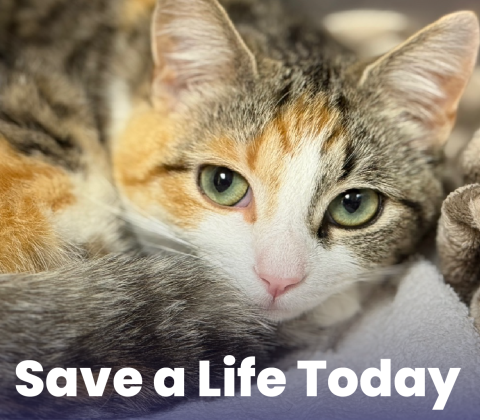

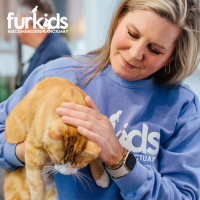
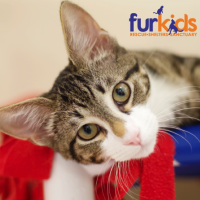




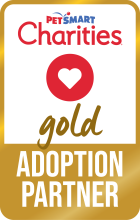
_200_49.png)



_200_175_75.JPEG)
